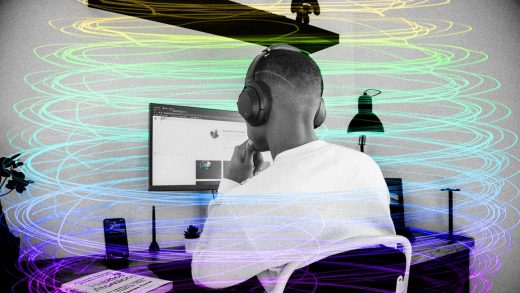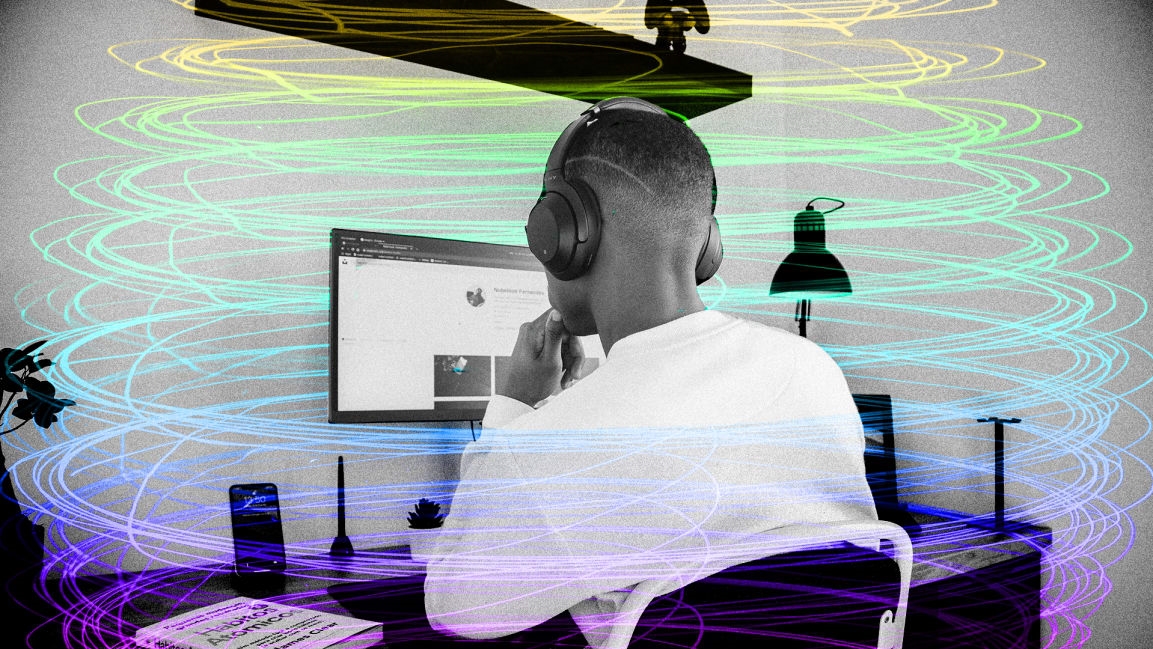Leaders: This is what you need to consider to make work transformational
Invisible learning, seamless learning, personalized learning, learning-in-the-flow-of work. These are all different ways to describe our collective desire as learning and development professionals to see workplace learning become deeply felt, experienced, and transformed into impact. For a decade, we’ve been circling around these concepts, with varying degrees of emphasis on one trend or another. (This year, the creator ethos is king.)
As the world continues to reemerge from the pandemic, deeply engaging experiences such as immersive art installations entice us because they represent our collective need to feel. After almost two years of isolation, we crave large-scale projections of light, color, and sound, whether to experience Van Gogh or a data visualization. At the same time, we want sensory deprivation, partly because information and knowledge are proliferating at breakneck speed. While we crave the stimulation and connection of the big screen, we’re burned out on the omnipresence of small screens and attention as currency.
After this saturation of the senses, after the drenching and deprivation are complete, manipulating our own attention and focus (making ourselves masters of our own self mastery) becomes not only cool but a logical progression. This level of control is ubiquitous in the health tech world (think fitness watches and apps that track every movement and breath and connect us with others who do the same). Mere engagement isn’t enough. We want connection, the flow of creativity, the satisfaction of true growth, and mastery in a field. Habituating ourselves into greater competence and productivity is what’s next for the future of work.
Work has the potential to be a transformational place because:
The conversations about burnout underscore the fact that many become addicted to work because they love the stimulation and the high-stakes feeling it brings. Research shows that preventing burnout at work is all about empathetic leadership. With 29% of employees wishing organizations would act with more empathy, online learning can optimize our attention in a sustainable way that promotes well-being and innovation at the right time and place.
Expanding the concept of time
Rethink the cadence of learning interactions. Meeting frequently in sprints instead of for longer periods, chunking interactions, or weaving them together differently means that learning can be optimally iterative. It can have spaced reinforcement, be continuous and in-the-flow of work, woven together with action and reflection, rather than one-and-done.
Promote polysynchronous interaction. The new normal has given us the chance to think about what needs to be synchronous, what is better off asynchronous, and how the two should be combined. For example, certain mental processes like writing and reading should happen inside the mind, not in a group setting, so that when you get to synchronous interaction, you’re ready for activities that require you to be together.
That includes modeling, coaching, feedback, debate, evaluation, difficult conversations. How many of these activities would be more meaningful if the pre-work was done correctly? The beauty of remote work and online learning is that you can be deeply intentional about asynchronous and synchronous learning. Mix and match the modalities and within a compressed time frame for faster and faster cycles. There’s an opportunity to think about time differently and see the compounding and exponential gains desired.
Build-in active engagement by default. One of the most overlooked and profound aspects of remote learning is that in person, it’s easy to appear present, while your mind is actually elsewhere. Virtually, you can design mechanisms for people to engage automatically, by offering opportunities for collaboration, discussion and feedback, mentoring, user-generated content, back-channeling, light assessments, metacognitive reflection, and much more.
Addressing the purpose of place
Rethink the office. The “surface area” of work and power used to be dominated by the physical aspects of it (and the requisite anachronistic activities) like concrete real estate, power suits, golf, martinis, and steak dinners. With online learning—readily accessible through our screens—we have the opportunity to remake the world of work in a way that is dramatically democratized. Freed from constraints, possibilities explode.
Create connection through context. What distinguishes learning in the workforce from learning in school is that context is paramount. At work, it’s almost all context, and that context is often the invisible lift given to those in the know. They are privy to everything implicit as well as explicit about a situation, such as the dress code, connections, the language, the jargon, how to steer a conversation.
What drives a lot of negative behavior in the workplace is fear and insecurity about the implicit and the unspoken. People are afraid they haven’t read the situation correctly and they don’t know what to do next. When we give people context, we show them the parameters and contours of their work. They have the big picture. It’s one of the best ways a leader can build stronger and more resilient teams: Create context for others and enable them to do the same.
Set learners up for success. Online learning can open up an array of possibilities for individuals and teams to set context relentlessly, in real-time, through designed interfaces. Think dashboards, gamification, and visualizations. Clever interfaces that juxtapose, clarify, and frame our experiences, that allow us to zoom in and out or collaborate in a different plane altogether.
At its most powerful, online learning can give us the feeling of becoming masters of Time and Place so that we can rethink what comes after the age of attention as currency and reshape our own self-mastery beyond the pandemic.
Christina Yu is the chief marketing officer of NovoEd.
(57)



